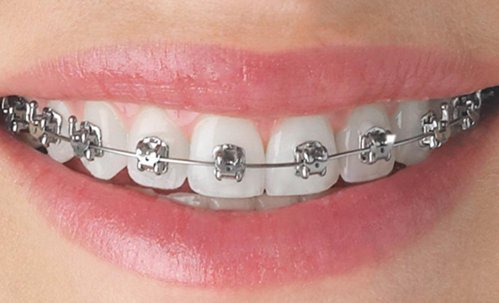Exploring Orthodontic Treatment in the UK: Enhancing Oral Health and Aesthetics
Orthodontic treatment typically begins with a comprehensive examination and assessment of the patient's dental and skeletal structures.

Orthodontic treatment is a specialized branch of dentistry focused on correcting misaligned teeth and jaws, thereby improving both oral function and aesthetics. In the United Kingdom (UK), orthodontic care plays a significant role in addressing a wide range of dental issues, from crooked teeth to malocclusions. This article provides an in-depth exploration of orthodontic treatment in the UK, covering its prevalence, procedures, benefits, and considerations for patients seeking orthodontic care.
The Importance of Orthodontic Treatment:
Orthodontic treatment goes beyond cosmetic enhancements; it contributes to overall oral health and well-being. Misaligned teeth and jaws can lead to various issues, including difficulty chewing, speech impairments, temporomandibular joint (TMJ) disorders, and increased risk of dental decay and gum disease. By correcting these issues, orthodontic treatment helps restore proper oral function, facilitates better oral hygiene practices, and prevents potential dental complications in the future.
Prevalence of Orthodontic Treatment in the UK:
Orthodontic treatment is prevalent in the UK, with a significant number of individuals seeking care to address dental misalignments and bite irregularities. According to the British Orthodontic Society (BOS), approximately one-third of children in the UK could benefit from orthodontic treatment, highlighting the widespread need for such interventions. Additionally, orthodontic treatment is not limited to children; an increasing number of adults are also opting for orthodontic care to improve their smiles and oral health.
Types of Orthodontic Appliances:
Orthodontic treatment utilizes various appliances to correct dental misalignments and achieve desired outcomes. Traditional braces, consisting of metal brackets and wires, remain a popular choice for comprehensive orthodontic correction, especially in cases of severe malocclusions. However, advancements in orthodontic technology have introduced alternatives such as ceramic braces, lingual braces (hidden behind the teeth), and clear aligners (e.g., Invisalign), offering more discreet and comfortable options for patients.
Orthodontic Procedures and Treatment Process:
Orthodontic treatment typically begins with a comprehensive examination and assessment of the patient's dental and skeletal structures. Based on the diagnosis, a customized treatment plan is developed to address specific concerns and achieve desired outcomes. The treatment process may involve the placement of orthodontic appliances, periodic adjustments, and regular monitoring by orthodontic specialists to track progress and make necessary adjustments.
Benefits of Orthodontic Treatment:
Orthodontic treatment offers numerous benefits beyond straightening teeth and improving aesthetics. Some key advantages include:
Improved Oral Health: Properly aligned teeth are easier to clean, reducing the risk of dental decay, gum disease, and other oral health issues.
Enhanced Functionality: Correcting bite irregularities improves chewing efficiency, speech clarity, and overall oral function.
Increased Confidence: A straighter smile can boost self-esteem and confidence, leading to improved social interactions and psychological well-being.
Long-Term Stability: Orthodontic treatment aims to achieve stable and lasting results, ensuring the longevity of oral health benefits.
Considerations for Orthodontic Patients:
Before undergoing orthodontic treatment, patients should consider several factors, including treatment duration, cost, maintenance requirements, and potential lifestyle adjustments. Orthodontic treatment often requires a long-term commitment, with treatment durations ranging from several months to a few years, depending on the complexity of the case. Additionally, patients should discuss financing options and insurance coverage with their orthodontist to ensure affordability and accessibility of treatment.
Conclusion:
Orthodontic treatment plays a vital role in enhancing oral health, function, and aesthetics for individuals of all ages in the UK. By addressing dental misalignments and bite irregularities, orthodontic care not only improves the appearance of the smile but also promotes optimal oral function and overall well-being. With advancements in orthodontic technology and a growing awareness of the benefits of treatment, more individuals are choosing orthodontic care to achieve healthier, more confident smiles. If you're considering orthodontic treatment, consult with a qualified orthodontist to explore your options and embark on a journey towards a straighter, healthier smile.
FAQs
Q. What is orthodontic treatment?
A. Orthodontic treatment is a specialized dental procedure aimed at correcting misaligned teeth and jaws to improve oral function, aesthetics, and overall oral health.
Q. Who can benefit from orthodontic treatment?
A. Orthodontic treatment is suitable for individuals of all ages, including children, teenagers, and adults, who have dental misalignments, bite irregularities, or other orthodontic concerns.
Q. What are the common orthodontic issues that require treatment?
A. Common orthodontic issues include crooked teeth, overcrowding, spacing between teeth, overbites, underbites, crossbites, and open bites. These issues can affect oral function, aesthetics, and oral health.
Q. What types of orthodontic appliances are available?
A. Orthodontic appliances include traditional metal braces, ceramic braces, lingual braces (hidden behind the teeth), and clear aligners (e.g., Invisalign). Each type of appliance offers unique advantages and may be suitable for different orthodontic cases.
Q. How long does orthodontic treatment typically last?
A. The duration of orthodontic treatment varies depending on the complexity of the case, the type of orthodontic appliance used, and individual treatment goals. Treatment may last anywhere from several months to a few years.
What's Your Reaction?











![Wireless Connectivity Software Market Size, Share | Statistics [2032]](https://handyclassified.com/uploads/images/202404/image_100x75_661f3be896033.jpg)



